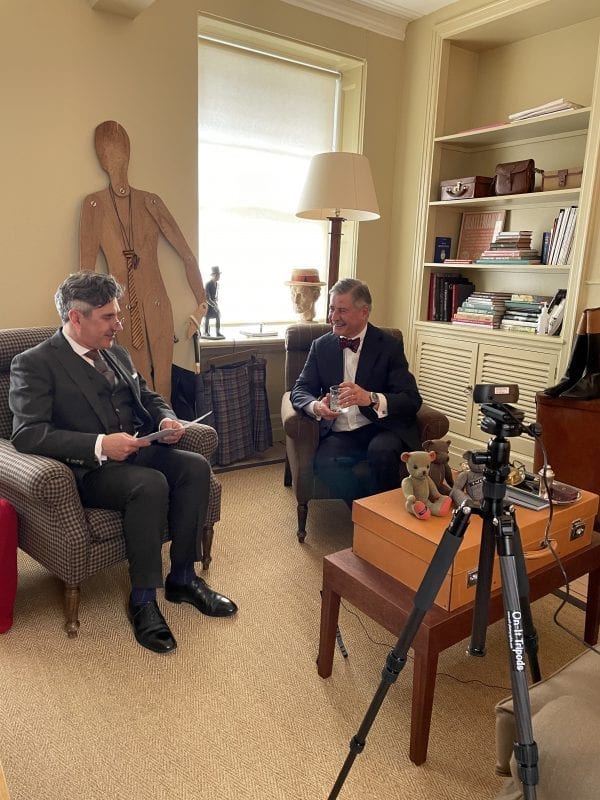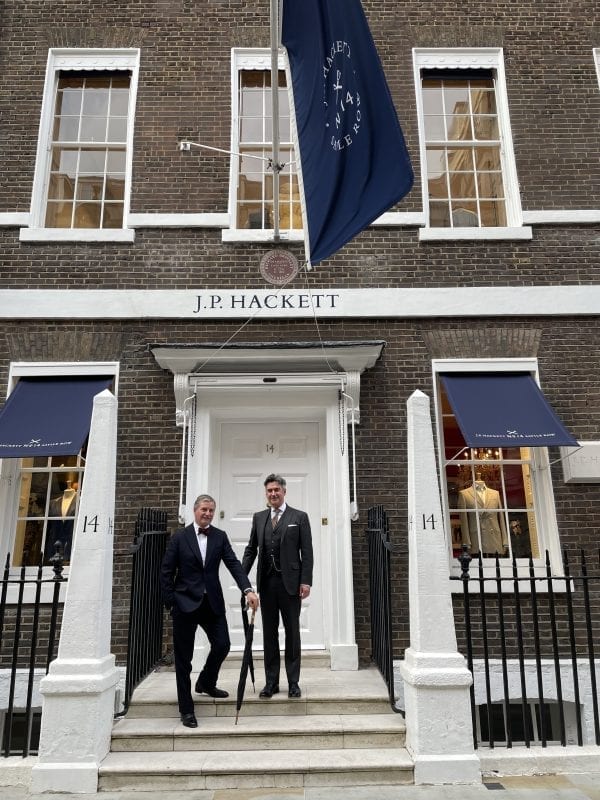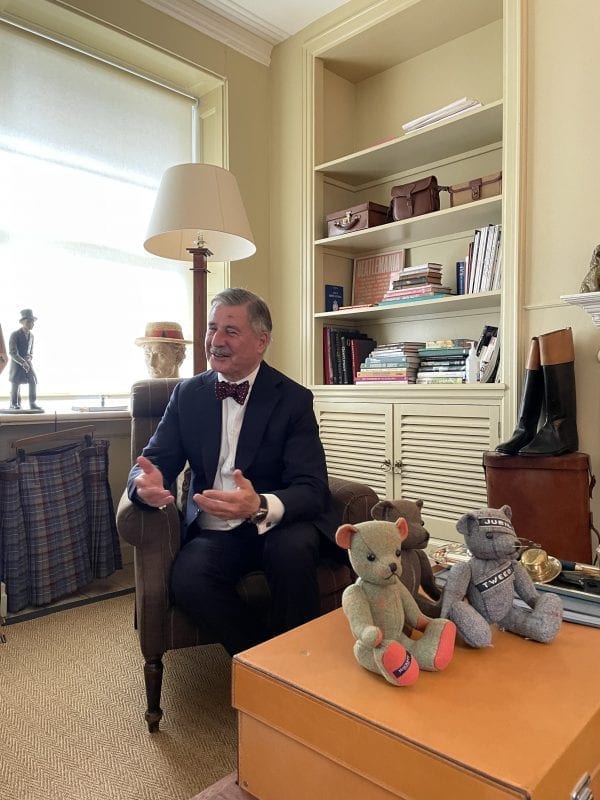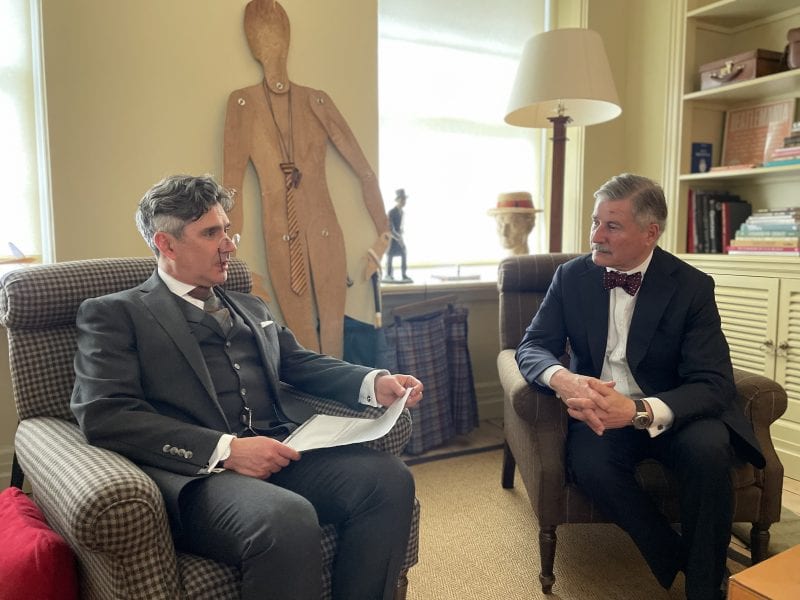Sitting Comfortably with Jeremy Hackett
Recorded Live from the JP Hackett Studio
Many of the most illustrious names above the doors on Savile Row are not sitting as comfortably as Jeremy Hackett is today. The likes of Henry Poole, Henry Huntsman, and Walter Norton are no longer with us to enjoy the plaudits their commendable, eponymous outfitters rightly continue to receive. Whereas Jeremy Hackett, founder of the so-called mens wear label, which now boasts the Georgian town house at No. 14 on this most sartorial of drags, occupies most comfortable offices at the top of a building that once belonged to Sir Hardy Amies.
From armchairs in this very personal space, Jeremy – or to use his Savile Row billing, JP Hackett – shared with Rag members, joining online for this latest virtual event, the story behind what he founded in 1983. He also gave all sight of some choice artefacts he has to hand here such as riding boots that belonged to Edward VIII, a kilt made out of a competition winner’s self-styled tartan, and some antique keepsakes otherwise displayed in cabinets throughout the tailoring and made to measure departments, amid ready-to-wear, signature Hackett items.
Hackett began as a second-hand concern (after struggling for a foothold in the shoe market), with Jeremy sourcing stock at flea markets here and in Paris. At the same time, Italian styles were arriving on these shores, he recalls. With less widespread availability of classic English cuts, Jeremy was able to establish the foundations of a business selling what he found on the likes of Portobello Road ahead of the step up to making clothes to sell such as jackets, suits, knitwear and, of course, what today is the Hackett signature polo shirt.
Amid a raft of insight, opinion and guidance, both on clothes and business, agreed was that military uniforms set the standard for silhouettes, with signature details thereon, such as four buttons paired into two with a gap in-between, which is of course a fashion of the Coldstream Guards, able to add distinction to any bespoke suit. The aforementioned kilt in fabric created by Alice Milivoyevich, who won the competition curated by Jeremy to encourage young designers of cloth, drew some questions from members. Including how much cloth is needed to make a piece of Scottish national dress. (Apparently, seven to nine yards).
In all, an evening when Rag members went back to the days when Jeremy started out on Savile Row before opening a first first store at Parsons Green (or Hackett Cross as London’s taxi drivers would call the spot). After one hour of conversation with Colin Cameron, our host and author of this review, proceedings concluded with a return to the present day – and more than 150 shops, worldwide – with an undoubtedly added sense and understanding of style.




